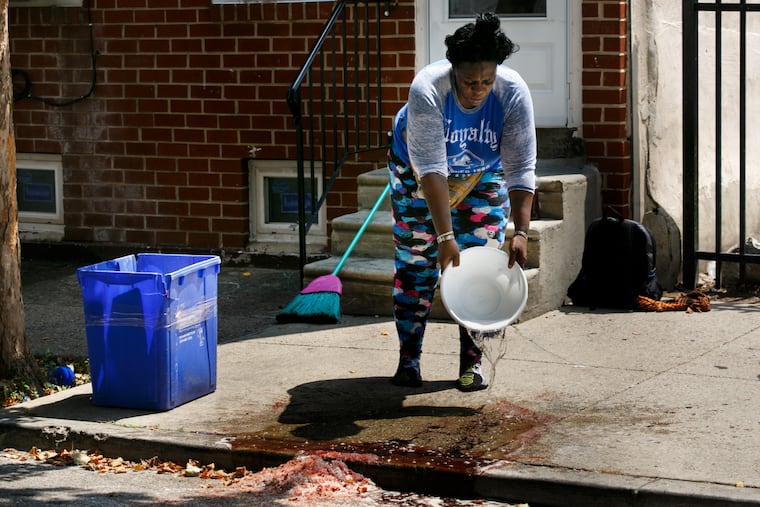To understand Philly’s gun violence crisis, in-depth reporting is needed | Opinion
Journalists covering gun violence have exceptional opportunities — and responsibilities — in beginning to offer solutions to one of the most important problems of our time.

In Philadelphia, we find out about gun violence from news reports that often sound the same. We are told when and where the incident took place, the age and gender of the victims, what wounds were suffered, how they got to the hospital, their medical conditions, and the state of the police investigation.
The conclusion often goes something like this: "There's no word on a motive. No arrests have been made." We feel hopeless.
As a Temple trauma surgeon who cares for people injured by guns every day, and as a journalist with decades of experience reporting on gun violence, we know these stories are far more complex than the cursory reports they often receive. We are saddened to see such tragedy in our community discussed this way, seemingly without empathy for those affected or desire for deeper understanding. We believe each of these stories represents a missed opportunity for media to contextualize gun violence, explore its root causes, and offer well-researched solutions.
In recent years we have come to recognize that gun violence is a public health problem, which means that it can be prevented. While the public health community has had major success preventing death from vehicle crashes over the past 30 years, mortality rates from gun violence remain unchanged.
We need a different approach to save lives, and journalists are a key part of this solution.
Instead of six lines of sterile facts about the latest victim, we need to be told why gun violence happens in our city and how shootings can be prevented. What can neighbors, schools, hospitals, advocates, businesses, government, and faith communities do? And what are they doing already?
According to a new study from the nonprofit Berkeley Media Studies Group, "Not enough people recognize that violence is preventable, in large part because of the public discourse around gun violence, which portrays it as extreme and inevitable." The authors found that in California, news reports rarely highlighted the connections between gun violence and social inequities, instead favoring "episodic" accounts of individual shooting incidents.
To shift the narrative around gun violence to explore causes and solutions, the study recommends that journalists ask questions about the context of gun violence, cultivate sources beyond police and prosecutors, and expand coverage to include other sectors, such as policy, education, health care, and business. In Philadelphia, we know that redlining, an example of historic racism, is geographically linked to modern-day gun violence. We need to hear about this and other structural causes of gun violence in our city regularly in the news.
These best practices are really just standard practices. The Code of Ethics set forth by the Society of Professional Journalists directs reporters to provide context, avoid stereotyping, and show compassion.
In the case of gun violence, shallow reporting can perpetuate harmful stereotypes and a sense of fear and futility. Comprehensive narratives could prove to be the most effective channel for public health intervention, allowing journalists to set the public agenda and open our minds to solutions.
And there are resources and promising examples for journalists to consider. Here in Philadelphia, WURD Radio's Violence Collaborative has been exploring the impact of violence while soliciting solutions from those most directly affected.
Even more newsrooms have been collaborating to report thoroughly on adjacent topics including prisoner reentry and poverty, guided in part by the practices of the Solutions Journalism Network.
Gun-violence reporting also demands a rigorous approach, with journalists working "to get people to open up to new ideas, rather than closing down in judgment and indignation," according to a recent SJN article, which reminds us that "there are ways to disrupt an intractable conflict."
The article cites a study observing that people who read more simplistic stories tend to "get stuck in negativity." However, more complex articles led readers to ask more questions and propose higher-quality ideas, indicating that "when people encounter complexity, they become more curious."
Meanwhile, the number of shooting victims in our city is on the rise, and several hundred people have been wounded or killed during the past few months alone. One recent incident left us with a particularly horrific image: a woman washing blood from the sidewalk where four young teens had been gunned down in a mass shooting.
This senseless suffering and loss of life must stop. Journalists covering gun violence have exceptional opportunities — and responsibilities — in beginning to offer solutions to one of the most important problems of our time.
Jessica Beard, MD, MPH, is a trauma surgeon, public health researcher, and assistant professor of surgery at Temple University's Lewis Katz School of Medicine.
Jim MacMillan is a Pulitzer Prize-winning photojournalist who covered hundreds of gun homicides during 17 years with the Philadelphia Daily News. He serves as the assistant director for external affairs at Temple University's Klein College of Media and Communication.